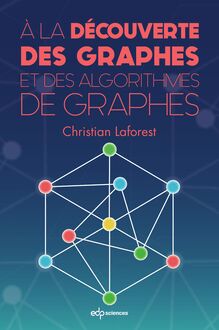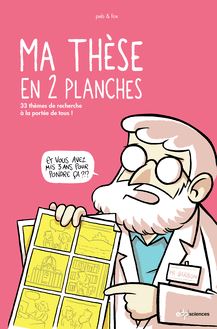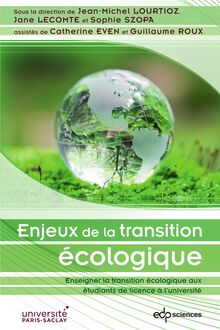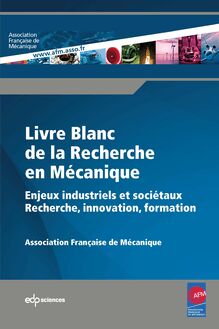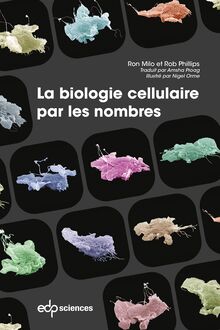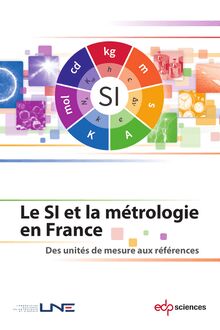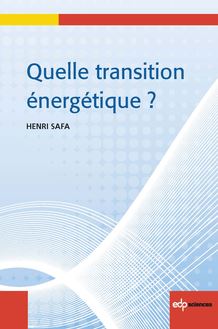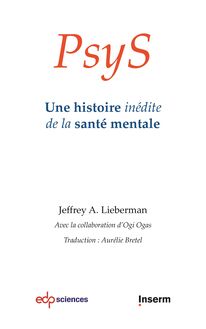The CoRoT Legacy Book , livre ebook
264
pages
English
Ebooks
2016
Obtenez un accès à la bibliothèque pour le consulter en ligne En savoir plus
Découvre YouScribe en t'inscrivant gratuitement
Découvre YouScribe en t'inscrivant gratuitement
264
pages
English
Ebooks
2016
Obtenez un accès à la bibliothèque pour le consulter en ligne En savoir plus
Publié par
Date de parution
06 juillet 2016
Nombre de lectures
0
EAN13
9782759824502
Langue
English
Poids de l'ouvrage
89 Mo
This book is dedicated to all the people interested in the CoRoT mission and the beautiful data that were delivered during its six year duration.
Either amateurs, professional, young or senior researchers, they will find treasures not only at the time of this publication but also in the future twenty or thirty years.
It presents the data in their final version, explains how they have been obtained, how to handle them, describes the tools necessary to understand them, and where to find them. It also highlights the most striking first results obtained up to now. CoRoT has opened several unexpected directions of research and certainly new ones still to be discovered.
Publié par
Date de parution
06 juillet 2016
Nombre de lectures
0
EAN13
9782759824502
Langue
English
Poids de l'ouvrage
89 Mo
The CoRoT Legacy Book
The CoRoT
The adventure of the ultra high precision photometry from spaceThe CoRoT Legacy Book
"This book is dedicated to all the people interested in the CoRoT mission Legacy Bookand the beautiful data that were delivered during its six year duration.
Either amateurs, professional, young or senior researchers, they will fnd
treasures not only at the time of this publication but also in the future
twenty or thirty years.
It presents the data in their fnal version, explains how they have been
obtained, how to handle them, describes the tools necessary to understand
them, and where to fnd them. It also highlights the most striking frst
results obtained up to now. CoRoT has opened several unexpected directions
of research and certainly new ones still to be discovered."
by the CoRot Team. Coordination Annie Baglin
ISBN 978-2-7598-1876-1
Legacy book exe.indd 1-3 30/06/2016 09:24The CoRoT Legacy Book
The CoRoT
The adventure of the ultra high precision photometry from spaceThe CoRoT Legacy Book
"This book is dedicated to all the people interested in the CoRoT mission Legacy Bookand the beautiful data that were delivered during its six year duration.
Either amateurs, professional, young or senior researchers, they will fnd
treasures not only at the time of this publication but also in the future
twenty or thirty years.
It presents the data in their fnal version, explains how they have been
obtained, how to handle them, describes the tools necessary to understand
them, and where to fnd them. It also highlights the most striking frst
results obtained up to now. CoRoT has opened several unexpected directions
of research and certainly new ones still to be discovered."
by the CoRot Team. Coordination Annie Baglin
ISBN 978-2-7598-1876-1
Legacy book exe.indd 1-3 30/06/2016 09:24The CoRoT
The adventure of the ultra high precision photometry from space
Legacy Book
by the CoRot Team. Coordination Annie BaglinThis work is published in open access under the terms of the Creative Commons Attribution License
(http://creativecommons.org/licenses/by/4.0), which permits unrestricted use, distribution, and
reproduction in any medium, provided the original work is properly cited.
Printed in France
ISBN 978-2-7598-1876-1
EDP Science, 2016©
Cover design and advertising by Patrice Amoyel - www.imago-toulouse.comThe CoRoT Legacy Book
c The authors, 2016
DOI: 10.1051/978-2-7598-1876-1.c001
Foreword
This book, entitled \The CoRoT Legacy Book", is dedicated to all the people interested in the CoRoT mission and the
beautiful data that were delivered during its six-year duration. Either amateurs, professional, young or senior researchers
nd treasures not only at the time of this publication but also in twenty or thirty years ahead.
It presents the data in their nal version, explains how they have been obtained, how to handle them, describes the
tools necessary to understand them, and where to nd them. It also highlights the most striking rst results obtained
up to now. CoRoT has opened several unexpected directions of research and certainly new ones still to be discovered.
The book consists in 5 Parts, divided into chapters which can be used and also downloaded separately.
Part I recalls the successive steps followed by the scientists and shows that it took a long time to promote this new
domain of ultra-high precision and long-duration stellar photometry from space. As it was indeed rapidly understood
that this type of research could only be done from space, this domain entered the wild competition of space mission
selection. Fortunately, however, this long period of maturation brought about several selections in di erent countries and
opened the way for future more ambitious projects, as described in Part V.
Part II is dedicated to the data themselves. Chapter 1 presents the observing program achieved over the 6 yr of
operation, the choice of the regions to be observed, the target selection and the tunings of the instrumental settings, very
important indeed to understand the data.
Chapters 2 and 3 describe the successive steps of correction necessary to get rid of the spurious instrumental
perturbations, and to obtain the required precision, which has largely overpassed the requirements. Chapter 4 explains how to
use the \Ready to use" N2 data, and Chapter 5 where to nd them.
Parts III and IV enlighten several major results, in the main directions, addressed by CoRoT:
the exoplanet-hunting program presented in Part IV with not only the detection of planetary transits, but also the
deep characterization of the planets thanks to intensive complementary ground-based observations and their joined
analysis;
star-planet interaction: a new direction of research, initiated by CoRoT but still in its infancy;
stellar physics: use of the seismology technique to obtain information on the internal structure of the stars under
scrutiny but also on their rotation;
stellar activity and environment: interpretation of the new from the time-domain photometry;
ensemble asteroseismology: an entirely new approach of the chemical evolution of our Galaxy.
Part V outlines the major lessons learned on technical as well as managerial domains, and how they have been used to
de ne new projects, thanks to this mission.
The in uence of the results of CoRoT on the scienti c priorities of the exoplanet and stellar community has been
very important, it is emphasized in Chapter 2, and nally Chapter 3 describes the projects of the immediate future.
Enjoy the CoRoT data!
IIIThe CoRoT Legacy Book
Acknowledgements
The CoRoT adventure has been possible because it was a collective work, done by many di erent people, engineers,
administrators, technicians, scientists.
They all have devoted enormous e orts, their enthusiasm and their skills over the years for the success of this project.
The CoRoT world thanks all its supportive organizations:
The French space agency, CNES, who took the risk of this adventure, and supported it throughout its life. The
European Space Agency and the Space agencies of Austria, Belgium, Brazil, Germany, Spain
Ministries of Research, Astronomical societies, academies. . . of the participating countries
And the many supportive colleagues all around the world.
This book is the last collective publication of the CoRoT Team.
The CoRoT space mission has been developed and operated by CNES, with the contribution of Austria, Belgium,
Brazil, ESA, Germany, and Spain.
IVContents
Part I. The advent of long duration,
ultra-high precision photometry of stars from space
Introduction 3
I.1 - The general framework . . . . . . 5
A. Baglin
I.2 - Seeds take root in Europe . . . . . . 7
M. Fridlund, I. Roxburgh
I.3 - The CoRoT story . . . . . . 11
A. Baglin, T. Lam-Trong, O. Vandermarcq, C. Donny, S. Burgaud
I.4 - Across the Atlantic: Canada’s MOST . . . . . . 17
J. M. Matthews
I.5 - In the United States: the long way to Kepler . . . . . . 21
W. Borucki
Part II. The CoRoT legacy data
Introduction 27
II.1 - The CoRoT observations . . . . . . 29
A. Baglin, S. Chaintreuil, O. Vandermarcq
II.2 - Description of processes and corrections from observation to delivery . . . . . . 41
M. Ollivier, A. Deru, S. Chaintreuil, A. Ferrigno, A. Baglin, J.-M. Almenara, M. Auvergne, S. Barros,
F. Baudin, P. Boumier, P.-Y. Chabaud, H. Deeg, P. Guterman, L. Jorda, R. Samadi, T. Tuna
II.3 - Exposure-based algorithm for removing systematics out of the CoRoT light curves . . . . . . 55
P. Guterman, T. Mazeh, S. Faigler
II.4 - The “ready to use” CoRoT data . . . . . . 61
S. Chaintreuil, A. Deru, F. Baudin, A. Ferrigno, E. Grolleau, R. Romagnan
II.5 - Where to find the CoRoT data? . . . . . . 109
S. Chaintreuil, A. Bellucci, F. Baudin, P. Ocvirk, H. Ballans, G. Landais, F. Ochsenbein, J.-L. Orcesi
VThe CoRoT Lecacy Book
Part III. Major scientific achievements in planetary science
Introduction 115
M. Deleuil
III.1 - Transit features detected by the CoRoT/Exoplanet Science Team . . . . . . 117
M. Deleuil, C. Moutou, J. Cabrera, S. Aigrain, F. Bouchy, H. Deeg, P. Borde,´ the CoRoT Exoplanet team
III.2 - Activity modelling and impact on planet’s parameters . . . . . . 123
The case of CoRoT-7
S. C. C. Barros, R. D. Haywood, M. Deleuil
III.3 - CoRoT’s planets: A family portrait . . . . . . 129
T. Guillot, M. Havel
III.4 - CoRoT planet host stars . . . . . . 133
M. Fridlund, G. Bruno, M. Deleuil, D. Gandolfi, the CoRoT CEST team
III.5 - Stellar classification in CoRoT faint stars fields . . . . . . 137
C. Damiani, J.-C. Meunier, C. Moutou, M. Deleuil, F. Baudin
III.6 - Exploration of the brown dwarf regime around solar-like stars by CoRoT . . . . . . 143
Sz. Csizmadia
III.7 - Planets orbiting stars more massive than the Sun . . . . . . 149
E. W. Guenther, D. Sebastian, D. Gandolfi, P. Montan˜es-Rodr´ ´ıguez, St. Geier, Sz. Csizmadia, F. Cusano,
H. J. Deeg, M. Fridlund, S. Grziwas, U. Heber, C. Heuser, F. Rodler, L. Tal-Or, the CoRoT-team
III.8 - Exoplanets versus brown dwarfs: The CoRoT view and the future . . . . . . 157
J. Schneider
III.9 - Star-planet Interactions . . . . . . 161
A. F. Lanza, S. Ferraz-Mello
III.9-1 - Investigating star-planet interactions with CoRoT . . . . . . 163
A. F. Lanza
III.9-2 - Tidal evolution of CoRoT massive planets and brown dwarfs . . . . . . 169
and of their host stars
S. Ferraz-Mello
VIContents
Part IV. Decisive breakthroughs for stellar physics
Introduction 179
K. Belkacem
IV.1 - Insights on the internal structure of stars as provided by seismology . . . . . . 181
Classical pulsators and Solar-like oscillations
A. Grotsch-Noels, S. Deheuvels
IV.2 - Pulsating red giant stars . . . . . . 197
Ensemble asteroseismology and Asteroseismology of stellar populations in the Milky way
B. Mosser, A. Miglio
IV.3 - The wealth of stellar variability . . . . . . 209
Stellar rotation and activity, Binaries and Stars with disks
F. Baudin, C. Maceroni, S. H. P. Alencar
Part V. CoRoT paved the road to the future
Introduction 229
V.1 -
